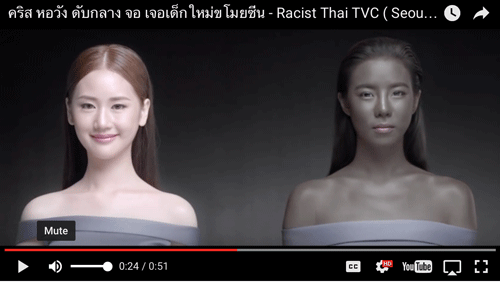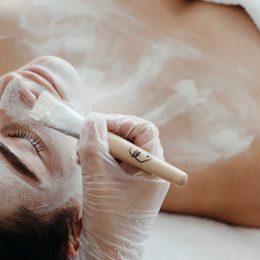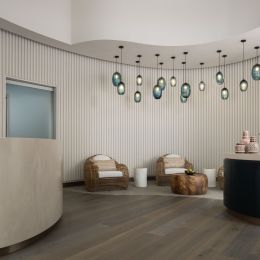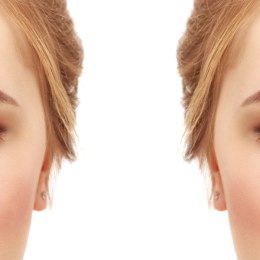Earlier this month, Thai cosmetics company Seoul Secret launched a new “beauty pill”, Snowz, and had locally famous actress Cris Horwang appear in its promotional video.
She starts out looking white: “In my world there is tough competition. If I don’t take care of myself, everything I have built, the whiteness I have invested in, could be gone.”
Then her skin gradually darkens until she resembles a “blackface” comedian of early 20th century cinema.
She looks down at herself in dismay, then at another, very white, Thai beauty who magically appears beside her: “If I was white, I would win,” Horwang says to herself.
But salvation is at hand: her young rival generously points to a package of Snowz that magically appears between them. Cris brightens up, and so does her skin. The ad ends with her smiling again and saying: “Eternally white, I’m confident.”

After an eruption of protests the ad was withdrawn with “heartfelt apologies” from Seoul Secret. But they didn’t withdraw the product.
Why? Asian women spend $13 billion a year on skin-whitening products. But the tide seems to be turning …
Banjara’s, a major herbal skincare brand in India, has launched a marketing campaign that makes a point of rejecting the traditional focus on skin lightening, a trend that dominates across Asia.
“The campaign seeks to promote the brand’s product offering via the unusual step of actively rejecting the dominant domestic narrative that considers darker skin to be socially undesirable,” says industry source Cosmetics Design Asia.
“It was launched earlier this month in the south of the country with a video Be Fair To Your Loved Ones, that negatively depicts familial pressure on a young women to lighten her skin.”
Ramesh Viswanathan, managing director of Banjara’s, explained: “The focus of skin products should be on healthy skin and not skin lightening.”
Skin whitening has long been a big segment for beauty and personal skincare in Asia, because of both traditional notions of social ranking attached to skin tone and because, in the region, skin pigmentation is a key sign of ageing.
“Skin whiteners are not products to make people look Caucasian,” says industry expert Dr Alain Khaiat.
“They are used to even the skin tone. In Asia, skin whitening is about getting rid of the signs of ageing.”
The implications of this trend for the Australian aesthetics market are enormous, given that we have become “the most diverse nation in the world”, according to Euromonitor International, which publishes the world’s most comprehensive market research on consumer products, commercial industries, demographics trends and consumer lifestyles.
“[Australia has] foreign-born people accounting for 31 percent of its total population and a net migration (eight million foreign-born citizens) of 9.8 percent per 1000 population in 2013.
“The changing ethnic, cultural and religious mix within Western societies is having a profound impact on consumer lifestyles, shopping behaviours and company strategies.”
To this end, keeping abreast of global trends can give your business an edge when it comes to understanding a culturally diverse client base, and deliver more personalised services.
Which brings us to pigmentation … one of the leading skin concerns of Australian aesthetics consumers and the focus of skin whitening for this market.
Whether caused by sun damage, hormones, genetic/racial proclivity or certain medications (or a combo), it can be a bugger, if you’ll pardon the crude vernacular, to diagnose correctly and often even harder to treat effectively.
This is especially the case with melasma, often referred to as “the mask of pregnancy”, although it is caused by other hormonal fluctuations and imbalances such as those in menopause. And is significantly worsened by UV exposure.
Melasma is notoriously difficult to treat, even with the most expert diagnosis and treatment program, and will often recur, so client expectations need to be managed.
Factor into all of this is that you might find yourself treating clients across the Fitzpatrick skin type spectrum – 1-6, the latter being the darkest – on a weekly basis.
Each skin type has very specific needs and contraindications as to the kinds of products and treatments that can be applied to it. How much trickier can it get?!
And let’s not forget the makeup factor (check out our stories Not Fair! and Cash In On the K-Beauty Boom). With our cultural diversity, salons, spas and clinics have a unique opportunity to capitalise on the very personal relationships formed with clients to tailor makeup trends and products to individual needs and sensibilities.
This is surely a better solution for your clients than taking pot luck at department stores, chemists and supermarkets – ergo, buying mass market multi-national brands supported by glossy, big dollar marketing hype – and surely a better solution for you as a business owner if clients are buying their products from you.
Overall the need, therefore, for ongoing training and education in the appropriate diagnostic tools, skincare and makeup trends, treatment protocols and products has never been greater.
Are you and your team keeping up to speed?




